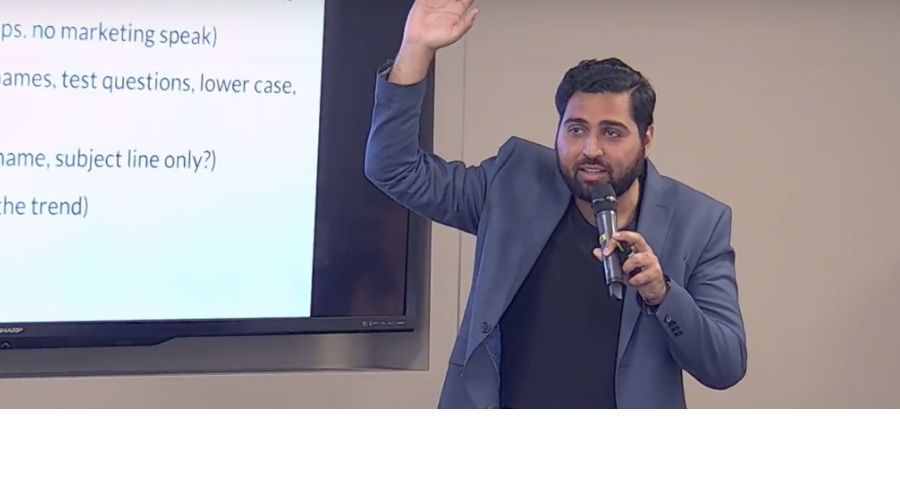
Founders Network is full of very knowledgeable founders with serious expertise. We recently spoke with fnMember Nathan Beckord, CEO of Foundersuite.com and leader of the fundraising podcast, How I Raised It. For many founders, fundraising can be daunting. This article reveals a few of his funding hacks to build a funnel and run your fundraising process so you can get the money in the bank.
Nathan understands the fundraising journey all too well. He founded Foundersuite, a venture-backed company that makes the leading “funding stack” which has helped users raise over $1.2 billion in seed and venture capital. Before starting Foundersuite, Nathan spent ten years working with over 150 startups as an interim CFO, business developer and advisor. Nathan has an MBA in Entrepreneurship, a BBC in finance, and is a Chartered Financial Analyst (CFA).
Funding Hack #1: How Not to Raise Capital
The most common mistake that startups make is to just throw a wide net out there.
They say something like, “hey, will you introduce me to investors?” It’s just too broad of a question. If you don’t know what you want, who else is going to know?
Instead, you have to:
Funding Hack #2: Treat Fundraising Like a Sales Process
Just like a sales process works on a funnel formula of:
- Lead generation
- Qualify
- Engage and
- Close
You can apply this process to fundraising as well:
- Building a large list
- Screening, filtering and qualifying
- Finding the right person at the right fund
- Initiating the warm introduction
- Move on to pitch meetings, term sheet discussion and due diligence (a deep dive into your business)
Although some parts are different, the overall process is similar. Let’s take a closer look.
Build the Funnel
Getting started, the first thing you’ll want to do is build your list. That means 150+ names, at a minimum.
It can take 100 pitches to get 3-5 commitments.
You can use sources like AngelList or FounderSuite and simply search by industry and location. Alternatively, you can also use Crunchbase. Make a list of similar (but not competitive) companies and see who funded them at the relevant stage.
These are by no means the only places to look. Sites like PEHub, InsideVenture, VenturePulse and StrictlyVC are all newsletters. Other options are conference speakers, Quora, Techcrunch and Medium. You can look at Pitchbook or CB Insights (which is paid) as well.
Filter and Qualify Leads
Now, just like with any good sales process, it’s time to filter and qualify your leads. This means removing them if:
- They’ve invested in your competitors
- They don’t have funds
- They have no recent deals
- They’re in the wrong sector or stage focus
- They’re in the wrong geographic location
- They have a poor reputation
You’ll want to filter down to around 100-150 to directly target. By cutting back now, you’ll get better results later.
Funding Hack #3: Map Contacts with LinkedIn
Next, you’re going to:
Create the “best possible introduction path” to each investor.
The best person to ask is someone who has made them money in the past, or someone they’ve invested with in the past. That could be another angel or VC.
The third best is someone they have invested in, like a portfolio or a startup. Beyond that, there are professional connectors as well as people that they might have met at a conference. If you have no mutual connections in common, go back to to other portfolios or startups they’ve invested in, and start a cold email conversation.
Funding Hack #4: Get Organized with a CRM
You can use something as simple as Google Docs or as robust as an actual CRM but either way, you have to refine and organize all of these tasks. You’re pitching 200 different investors. There are a couple of follow-up actions that have to happen directly afterwards. Getting momentum going is job number one.
Make Sure Your Pitch is Amazing
You don’t get a redo with investors. Get your pitch honed and get honest feedback.
If you have a financial model, show how you’re going to spend that money so that the investor feels confident that you know your operating plan. Otherwise, having a one-pager or demo can be helpful.
Funding Hack #5: Start the Conversation
As you’re mapping out your journey, you may find that, in essence, all roads lead to one or two “power connectors”. This is where you can start your conversation by letting this person know where you are in your funding stage, and if they know certain people well enough to make an introduction. From there, you can simply list some of the most promising names.
For every person that your “power connector” says that they know, you can then make an introduction request email. Keep it short, light and a tease — because you want them to call or meet with you. This kind of email is very easy to forward along so that it gets into the hands of the right person.
After that, it’s time to hustle!
The key goal is to get momentum or FOMO going. You want investors to feel lucky to be part of your deal.
- The best way to do this is to have lots of meetings. Investors are going to ask how your round is going, and you want to be able to say something like “good! I just started fundraising, I’ve got 12 this week and 14 next week, and we’re aiming to close by March 31st.”
- Split test your pitch. Continue to refine and improve it. Write down every question the investor asks. The pitch should stay short, but the appendix can get longer and longer.
- You can leverage VCs off each other. Just signaling that others are interested really makes them sit up and pay attention.
What if You Don’t Have a Lead Investor?
If you don’t have an investor to lead the round, what should you do? Keep hustling. Keep adding investors to the funnel. Once you get around two-thirds of them committed, you can start to dictate terms, even if you don’t have a lead.
Use the “conditional commit” approach. Tell them, “give me an amount that you’re willing to commit and tell me any conditions.” Don’t forget that shorter timeframes ignite that “FOMO”- the Fear of Missing Out.
Go For The Close
Ask for their interest level, ask for their next steps, and make them chase you for a bit. You should expect 3-6 meetings before the term sheet. Follow up frequently. Finally, don’t let up until the money is in the bank.
Founders Network regularly provides shortcuts and insights on all founder challenges, including fundraising. To request a nomination, click here.






